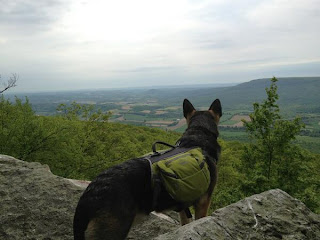From the CHA (Certified Horsemanship Association) July Newsletter
Visit www.CHA-ahse.org
Equine Heat Stress and Heat Stroke
Summer time! And the heat is rising. In
the winter we look forward to summer months of intense equine activity. But
are we ready for the heat and humidity?
Prevention is the key to riding in the
heat. Horses must be in condition and riders should know the signs of heat
stress and heat stroke - and how to react. Water should be offered often,
even during exercise. Horses are cooled by sweating and respiration. The
evaporation of sweat cools the body. If the day is humid, regardless of the
temperature, sweat will not evaporate. If the humidity is high there can be
significant losses in water and electrolytes at a temperature of 72
degrees, resulting in dehydration. In extreme dry heat horses can quickly
become dehydrated due to loss of fluids and electrolytes through
sweat.
Respiration is commonly referred to as
breathing. A puffing horse is under stress and trying to cool his body.
Moisture is lost during the respiration process. The normal respiration
rate of an adult horse at rest is 8-16 breaths per minute. Know what is
normal for your horse.
Heat stress usually does not require
veterinarian intervention, but the horse must be attended. The most
commonly observed signs of heat stress are profuse sweating, rapid
breathing and a rapid heart rate. When a horse is showing signs of heat
stress, stop all work and begin the cooling procedure.
Airflow is important to lowering the
body temperature, so refrain from returning him to his stall. Hand walking,
preferably in the shade, is one option. If you have access to fans this
will help cool his body. Rinse the horse off with cool, not cold, water.
Small amounts of water should be given at frequent intervals. Hot horses
can colic if allowed to drink a large quantity of water all at
once.
Heat stress can quickly become heat
stroke; a life threatening condition. A veterinarian needs to be called!
The symptoms of heat stroke are dry, hot skin; high pulse (normal pulse
rate is 36-42 beats per minute), high respiratory rate and a high
temperature. A temperature of 104 degrees for any length of time is a life
threatening condition. The average normal temperature of an adult horse at
rest is 100 degrees Fahrenheit – 38 degrees Celsius.
While waiting for the veterinarian to
arrive, move the horse to a shady area with ventilation, provided by wind
or fans. Work on lowering the internal temperature of the horse. Begin
applying repeated applications of water on the neck, chest, shoulders, and
legs. The water must flow over these areas and run off in order to remove
the built up heat. Walk the horse to help dissipate heat through airflow
and keep good blood circulation to and from the muscle. Do not throw a wet
towel over the head and neck, as it acts as insulation.
Offer the horse sips of water at
frequent intervals. Once the veterinarian arrives she will start
electrolyte and fluid replacement treatment. There is a condition that
horses may develop called anhidrosis - the inability to produce sweat. The
cause is still under research, but one theory is the gradual degeneration
of the sweat glands due to continued stimulation by a hot humid climate.
Many times when these horses are relocated to a cooler region their ability
to sweat returns, but these horses are at a higher risk of heat stroke and
must be monitored closely.
So, enjoy the summer with your horse,
but be aware of your horse’s comfort level. Stop, take a break, and
relish the quiet time with your companion.
For
information about caring for and feeding horses take the online course
“Nutrition for Performance Horses” taught by Eleanor Blazer. Go
to www.horsecoursesonline.com
for more information and earn CHA discounts on continuing education credit
hours for your certification renewal. Visit Eleanor's web site at www.thewayofhorses.com



